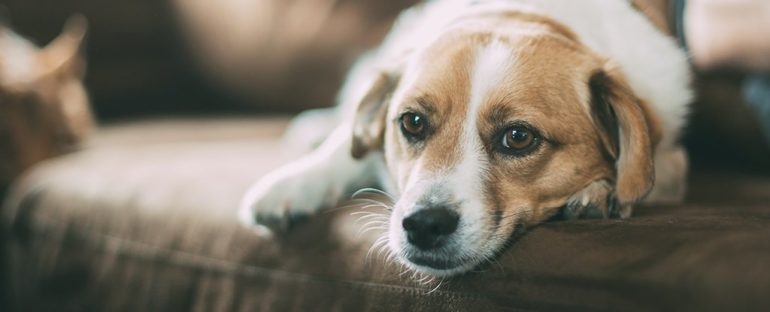Nearly 4 in 5 dog owners report instances of jealousy from their pooches, and new research suggests those behaviors can be triggered even if a supposed rival for affection and attention is out of sight.
In other words, dogs appear to have the mental capacity to imagine a situation that would make them feel jealous, even if it’s not fully in sight.
As we cannot quiz canines about their thoughts or feelings, the study is a useful insight into what might be going on inside a dog’s mind when it sees (or doesn’t see) something that it thinks it needs to be jealous of.
“Research has supported what many dog owners firmly believe – dogs exhibit jealous behavior when their human companion interacts with a potential rival,” says psychologist Amalia Bastos from the University of Auckland in New Zealand.
“We wanted to study this behavior more fully to determine if dogs could, like humans, mentally represent a situation that evoked jealousy.”
In humans, jealousy is thought to be closely linked to self-awareness, so the research also has something to say about whether or not dogs are actually aware of themselves – and the mental processes that might be behind the jealous behavior that so many owners see.
Bastos and her colleagues ran exercises with 18 dogs, which looked on while their owners sat next to either a realistic-looking fake dog or a fleece cylinder. The fake dog acted as a rival for affection, and the cylinder acted as a control.
Once the dogs had observed the scene with their owners and the fake dog, a barrier was put up blocking the view of the fake dog but not the owner or the owner’s motions. Researchers then tipped the fake dog over and tapped the owner on the shoulder, signaling that they should pretend to pet and talk to the now-gone fake dog.
The owners were, in fact, petting a fleece-covered shelf at this point, an effort on the researchers part to avoid the owners providing any unconscious cues to the canine on how to react. Owners used generic phrases – “You are such a good dog!” – to avoid getting their pet excited.
The process was repeated with the cylinder, except for a few changes. While owners would talk to and pet the cylinder as if it were a dog (using the same generic chatter), the owner’s dog viewed the interaction without a barrier present.
The fake dog remained on the scene, too, but was located 1.5 meters (4.9 feet) from the owner, was always facing the owner, and within view of the actual dog.
Using a force gauge, researchers found that the dogs tended to pull on their leads with much less force when the cylinder was used compared with the fake dog.
Three human-like signatures of jealous behavior were observed. First, the behavior only emerged when a perceived social rival was involved, and second, it emerged even for out-of-sight interactions with this rival.
Thirdly, because the fake dog was either imagined to be present during the first scenario or was actually present even when the dog owners were petting the cylinder, the researchers could say that the jealous behavior happened as a consequence of the interaction and not just because of the presence of the other dog.
“These results support claims that dogs display jealous behavior,” says Bastos. “They also provide the first evidence that dogs can mentally represent jealousy-inducing social interactions.”
“Previous studies confounded jealous behavior with play, interest, or aggression because they never tested the dogs’ reactions to the owner and the social rival being present in the same room but not interacting.”
These kinds of carefully constructed experiments are important to figure out what might be going on in the minds of dogs as we interact with them – we can, of course, observe how they act, but that’s not necessarily an indicator of what they’re thinking or feeling.
The tests used here with the fleece cylinder control show that the attention given to a social rival caused more restless activity in the dogs, not the lack of attention itself. Ultimately knowing more about the inner lives of dogs will mean being able to take better care of our canine companions.
“There is still plenty of work to do to establish the extent of the similarities between the minds of humans and other animals, especially in terms of understanding the nature of nonhuman animals’ emotional experiences,” says Bastos.
“It is too early to say whether dogs experience jealousy as we do, but it is now clear that they react to jealousy-inducing situations, even if these occur out-of-sight.”
The research has been published in Psychological Science.



